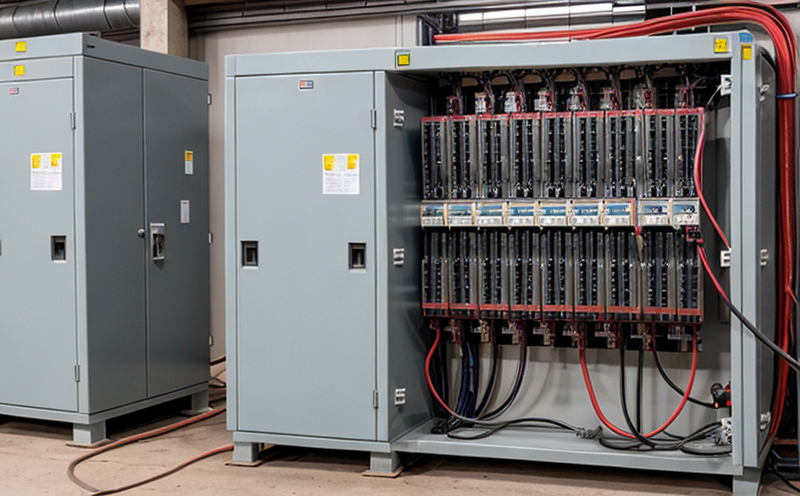IEC 60840 High Voltage Cable and Transformer System Testing
The IEC 60840 standard provides comprehensive testing protocols for high voltage cable systems used in power distribution networks. This service focuses on ensuring that the insulation, mechanical strength, electrical performance, and thermal stability of these critical components meet strict international standards.
IEC 60840 covers a wide range of tests including but not limited to partial discharge (PD) testing, dielectric withstand voltage (DWV), impulse voltage test, and corona discharge measurement. These tests are crucial for identifying potential weaknesses in the cable system before they become operational issues.
The transformers within this context serve as a key component of the electrical network, converting high voltages into lower levels suitable for consumer use. Testing these transformers according to IEC 60840 ensures their reliability and longevity, which is essential for maintaining grid stability and preventing outages.
Our laboratory uses state-of-the-art equipment and follows rigorous procedures to conduct these tests accurately. We ensure that all specimens are prepared precisely as per the standard requirements before testing begins. This includes conditioning cables under controlled environments to simulate real-world conditions, which is critical for obtaining reliable results.
The testing process involves several stages, starting with visual inspection followed by non-destructive testing methods like ultrasonic testing and eddy current scanning. Once preliminary checks are completed, the actual high voltage tests begin. During these tests, we monitor various parameters such as insulation resistance, capacitance, and inductance to ensure they fall within acceptable ranges.
For transformers specifically, we apply specific test voltages and measure short-circuit impedance, no-load losses, and load losses. Each stage of the testing process is meticulously documented, ensuring that every detail can be traced back to its source. Our reports are comprehensive, providing not only numerical data but also detailed explanations of any discrepancies found during testing.
| Test Type | Description | Objective |
|---|---|---|
| Partial Discharge (PD) Testing | Measures small electrical discharges within the insulation of cables. | Identifies early signs of insulation degradation. |
| Dielectric Withstand Voltage (DWV) Test | Tests the ability of cable insulation to withstand high voltages without breakdown. | Evaluates the electrical strength of the cable. |
| Impulse Voltage Test | Simulates lightning strikes on cables and transformers. | Assesses the resilience to transient overvoltages. |
| Corona Discharge Measurement | Detects corona discharge, which can lead to accelerated aging of insulation materials. | Evaluates the quality of electrical contact and insulation integrity. |
Why It Matters
The importance of IEC 60840 testing cannot be overstated, especially in the context of power distribution and utility networks. Ensuring that cables and transformers comply with this standard is vital for several reasons:
- Enhanced Reliability: By identifying potential faults early on, we can prevent costly outages and disruptions to service.
- Safety Compliance: Meeting international standards ensures that the equipment meets safety requirements set by regulatory bodies worldwide.
- Cost Efficiency: Early detection of issues helps avoid expensive repairs or replacements later in the lifecycle of the equipment.
In essence, IEC 60840 testing is an investment in the longevity and reliability of power distribution systems. It helps ensure that utilities can provide stable and reliable electricity to consumers while minimizing downtime and maintenance costs.
Why Choose This Test
Selecting IEC 60840 testing for your high voltage cables and transformers offers numerous advantages:
- International Recognition: Adherence to this standard ensures compatibility with global standards, facilitating international trade.
- Expertise and Experience: Our team of qualified professionals brings extensive experience in performing these tests accurately and consistently.
- Comprehensive Reporting: Detailed reports provide insights into the performance of your equipment, helping you make informed decisions about maintenance schedules and replacements.
We also offer post-test analysis services that can help you understand the implications of any discrepancies found during testing. This service ensures that you not only meet regulatory requirements but also gain valuable insights into improving the reliability of your infrastructure.
Use Cases and Application Examples
- New Installation Quality Assurance: Ensuring newly installed cables and transformers comply with IEC standards before they go live.
- Preventive Maintenance: Regular testing to identify potential issues early, reducing the risk of unexpected failures.
- Retrofitting Existing Infrastructure: Upgrading older equipment to meet current safety and performance standards.
In each case, IEC 60840 testing plays a crucial role in maintaining the integrity and reliability of power distribution networks. By adhering to these stringent tests, utilities can ensure that they are providing safe, efficient, and reliable service to their customers.





